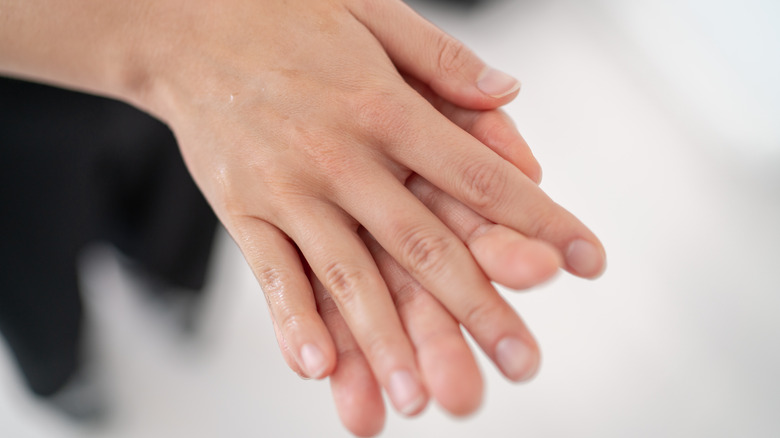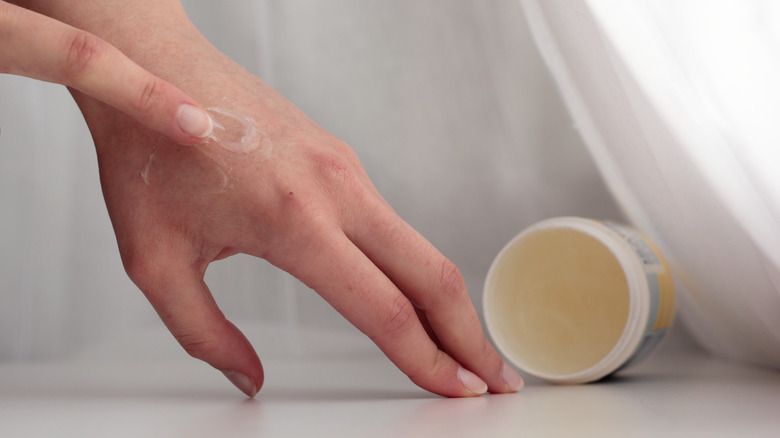The Real Reason You Keep Getting Blisters On Your Hands
As defined by Harvard Health, a blister is a bubble of fluid that forms under the skin and contains a clear watery liquid called serum. A blister is caused by neighboring tissue reacting to injured skin, and, as long as the blister remains sealed, the serum provides a natural protection for the damaged area it is covering. If you have a small blister, this is called a vesicle; larger blisters are called bullae.
There are many causes for blisters, such as irritation to the skin caused by friction, certain chemicals, or extreme temperatures. Other causes can include allergies, namely, allergic contact dermatitis, which can result from contact with a chemical or poison such as poison ivy. Infections such as chicken pox, shingles, or bullous impetigo can also cause blisters.
A common condition that can cause blisters on the hands is called dyshidrosis (via Mayo Clinic). Blisters resulting from dyshidrosis are very tiny and form in clusters, typically last up to three weeks, and are accompanied by intense itching. These blisters are also known to sometimes recur before your skin is fully healed from the initial blisters.
What are the best treatments for blisters?
If you have dyshidrosis and are trying to treat the condition on your own, Cleveland Clinic provides some recommendations. These suggestions include washing your hands with warm water rather than hot water, soaking your hands in cool water to relieve symptoms, applying cool compresses up to four times a day for 15-minute stretches to minimize discomfort, and applying moisturizer frequently. If you don't see enough of an improvement, you may want to talk to your doctor about getting a prescription-strength cream. Your doctor may recommend further treatment options if your case is more severe. Unfortunately, there is no cure for dyshidrosis, but these and other methods could be helpful to control or prevent flare-ups.
Oftentimes, however, common causes of blisters can be prevented in advance. To minimize chafing, the American Academy of Dermatology recommends applying powder or petroleum jelly to problem areas to reduce friction, and also to cease your current activity if you experience pain or notice redness. If you do develop a blister, unless it is very large and causing intense pain, avoid popping or draining it, as this could lead to infection.


